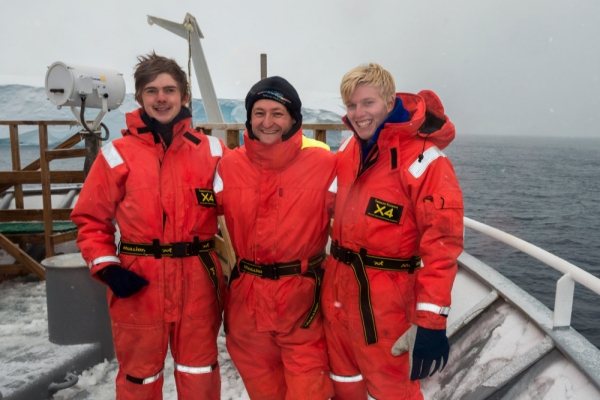Our journey is slowly coming to an end. The past five weeks has passed so quickly and I have loved every moment of it. We have travelled nearly 15,000 km and we got as far south as 74.78° S. Traveling this distance has really put into perspective how big the oceans are, but also how much life there is.
We identified 111 marine species in our 40 trawls and sighted countless seabirds and hundreds of whales!
Leaving the polar zone at 60° S was a sad morning, but leaving this unique place has made me promise to come back! The remoteness of the Ross Sea was truly amazing. We only saw two other ships the whole voyage! Sights of the untouched landscapes, wildlife, snow, sunrises, icebergs, and of course the never-ending ocean has made for the most incredible trip. Journals from explorers such as Sir Peter Blake and Sir Edmond Hillary described how this part of the world has a certain "draw". I now know what they meant. It's such a special place, leaving you feel a real sense of awe and extremely humbled. Being a part of the science project that will help us better understand and protect this pristine environment has been amazing.
Contributing to the voyage's science
The science objective to study primary productivity has been underway the whole voyage. This work may tell us why the whales migrate to Antarctica in summer. Plankton are at the bottom of the food-chain and so a high availability of them creates a lot of food for species up the chain like krill and small fish, and then more food is available for animals like toothfish and whales. To find the specific parts of the Ross Sea with high primary productivity, every morning at 3 am, 9 am, and at noon I filter samples of water and preserve them - either by adding chemicals or by snap-freezing them in liquid nitrogen. We are collecting measurements of different nutrients, salinity and chlorophyll levels. The end result will be really interesting to see.
The Southern Ocean's harsh side
Just as everyone started saying how lucky we had been with the weather this trip, we found ourselves experiencing the harsh side of the Southern Ocean. Winds of 55 knots started blowing from the north, slowing our progress, and bringing with them 6 metre waves. These came crashing over our bow with considerable force - the white-wash flying 20 metres into the air and covering the windows. The force even broke one of the wooden whale platforms from the deck! Luckily it didn't wash overboard.
To begin with, the violent pitching of the boat was an enjoyable novelty. It had some benefits, like quickly getting up the stairs if you timed the waves right. However everyday tasks like getting to sleep and showering become more difficult. Anything unattended or unattached will fly to the floor. I even had to resort to writing this blog with my chair strapped to the table to stop myself sliding across the room! The waves are forecast to subside over the next day so everyone is quite looking forward to a stable ship.
The big clean up
We also have begun the big clean-up. One of the first jobs involved scrubbing and water-blasting the wet lab - the fish seems to have gotten everywhere. Not such a nice job but it has to be done!
Blake

